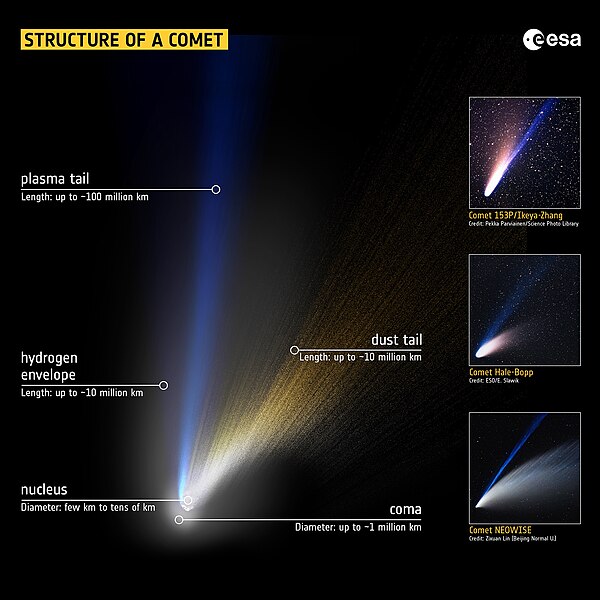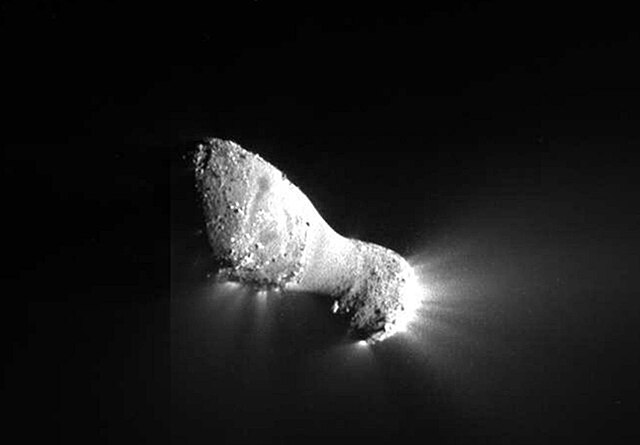Tempel 1 is a periodic Jupiter-family comet discovered by Wilhelm Tempel in 1867. It completes an orbit of the Sun every 5.6 years. Tempel 1 was the target of the Deep Impact space mission, which photographed a deliberate high-speed impact upon the comet in 2005. It was re-visited by the Stardust spacecraft on February 14, 2011, and came back to perihelion in August 2016. On 26 May 2024, it will make a modest approach of 0.55 AU to Jupiter which will lift the perihelion distance and 9P will next come to perihelion on 12 February 2028 when it will be 1.77 AU from the Sun.
Composite of images of nucleus obtained by the Deep Impact impactor
Tempel 1 in X-ray light by Chandra
The head-on collision of comet 9P/Tempel and the Deep Impact impactor
Before and after comparison images from Deep Impact and Stardust, showing the crater formed by Deep Impact on the right hand image.
A comet is an icy, small Solar System body that warms and begins to release gases when passing close to the Sun, a process called outgassing. This produces an extended, gravitationally unbound atmosphere or coma surrounding the nucleus, and sometimes a tail of gas and dust gas blown out from the coma. These phenomena are due to the effects of solar radiation and the outstreaming solar wind plasma acting upon the nucleus of the comet. Comet nuclei range from a few hundred meters to tens of kilometers across and are composed of loose collections of ice, dust, and small rocky particles. The coma may be up to 15 times Earth's diameter, while the tail may stretch beyond one astronomical unit. If sufficiently close and bright, a comet may be seen from Earth without the aid of a telescope and can subtend an arc of up to 30° across the sky. Comets have been observed and recorded since ancient times by many cultures and religions.
Comet Hale-Bopp
Structure of a comet
Nucleus of 103P/Hartley as imaged during a spacecraft flyby. The nucleus is about 2 km in length.
Comet 81P/Wild exhibits jets on light side and dark side, stark relief, and is dry.








